Maximize Negativity for Sleep, Health and Happiness
The power of negative charge
I tend to just put up with things without asking why they’re happening.
I definitely need to practice being more aware and interrogating my surroundings and why something might be changing in my body, mind and health, because as Socrates exhorted us: “The unexamined life is not worth living,” since without examining what happens around you and within you, you won’t have any idea what the universe is getting at. Your existence has a purpose and everything happens for a reason. The universe reflects your own imperfections and upon seeing them you’re meant to correct yourself and draw closer to realization.
Examining your life requires a scientific mindset: determining cause and effect.
To set the stage: I’m visiting my parents and I’ve been sleeping poorly for weeks even though I brought a grounded bed sheet just like I use at home, and which had made a big difference when I first started using it there.
By poorly I mean that I’ve been needing about 11 hours to feel well rested instead of 6. So I’m still taking care of myself by sleeping as much as I need to, it’s just requiring a lot more time to do it. And I didn’t really wonder why. I’m used to things just weirdly fluctuating in my life. But again, it's time to make a habit of thinking harder about things that matter, which is everything that happens to me.
The spark that made me finally wake up to what was happening, was a literal spark. Well not just one, a bunch of them (I really wasn’t paying attention).
Since I make a point of being outside as much as possible I’ve taken to working on the balcony of my parents apartment where I get plenty of fresh air, indirect sunlight and exposure to the natural daily and seasonal temperature variations.
The balcony is where the external AC units are strapped to the outside of the concrete parapet - i.e. the low boundary wall that prevents us from falling off. There are steel supports that were driven through the parapet to hold them and then painted over on the inside. Occasionally my moist leg would brush against these and I would get a shock. This happened over and over again for a couple days until I became more careful and avoided them. This was the first real clue to what was going on that I simply ignored and didn’t bother to connect to anything else.
Along with this clue I have to explain some background information that had been stewing around in my brain for a few weeks as well.
I had been listening to interviews with neurosurgeon and quantum biology enthusiast Dr Jack Kruse, groundbreaking biomedical engineer Gerald Pollack, PhD, and medical maverick Dr Tom Cowan, mostly on the importance of charge and sunlight. Kruse is famous for advocating strongly for the importance of getting plenty of sun and for how it is likely utilized by our biology in myriad ways we’re unaware of, Pollack is renowned for popularizing the concept of structured fourth phase water, and Cowan is perhaps most famous for being an ardent “virus denier,” but has done a lot of great work publishing on the importance of vitamin C and challenging assumptions about heart disease and health misconceptions in general (his overall understanding of what causes disease is very close to my own: i.e. it’s a balance between excess toxins/pathogens and lack of nutrients at every level of our complex being, meaning not just physical, but energetic, emotional, thought, beliefs, etc).
Pollack has been a bit circumspect about his latest work on charge (his forthcoming book on the subject will explain various unsolved mysteries about gravity, flight, weather, breath and more), but Cowan let the one of the cats out of the bag during an intriguing short interview clip when he spoke about an unpublished paper by Pollack suggesting that the most important thing we breathe is charge, not oxygen (Cowan doesn’t even think it’s possible for us to absorb oxygen with our lungs at all, but we can leave that aside for now. We certainly do need oxygen for our physiology, and can also get it directly from splitting the water molecule). We absorb negative charges in our lungs and in essence breathe out positive ones (when we exhale CO2 hydrogen ions that are dissociated from carbonic acid get combined into H2O or water, so their free positive charge is no longer present in the bloodstream, ie the blood becomes more negatively charged or basic rather than acidic).
The reason we need to do all this is because we run on DC bioelectric current, or moving electrons, just like an appliance, but in a much, much more complicated way.
Thanks for reading Dr. Syed Haider! This post is public so feel free to share it.
It’s well known that we can measure the electrical current in the brain by an EEG, the heart by an EKG and the muscles (activated via nerves) by an EMG. What is less well appreciated is that charge is the primary driver of blood flow in our vascular system (the heart interrupts continuous flow into beats, creates vortex flow, segregates the blood into sections and directs each one to specific tissues, which is an entire upcoming blog in and of itself that will blow your mind as it did mine). The water in our blood takes infrared energy from the environment as Pollack proved in his lab and uses it to structure itself along the inside walls of arteries and veins. This structured water expels protons into the lumen where there is regular flowing bulk water, so the structured water at the edges becomes negatively charged.
This separation of charges is the definition of an electrical battery that can perform work. The protons that end up in the interior lumen of the water column perform that work when they push against each other (opposite charges attract and like charges repel) and create spontaneous and continuous flow of the water column as long as it remains energized by the infrared energy created by the heat given off from our own metabolism as well as from the environment (even in the pitch black darkness we’re surrounded by infrared light, which is how night vision goggles work).
We also have other semiconductive tissues including our connective tissues and nerve fibers, which transmit electrons around our bodies. We use electrons in the “electron transport chains” of our mitochondria to create ATP, one of the chemical energy molecules used by our bodies to power chemical reactions. The electron transport chain takes high energy electrons and moves them towards lower energy states and uses the released energy to create ATP. In order to do this it also utilizes some protons and oxygen, which serves as the “terminal electron acceptor.” The oxygen combines with protons and electrons at the end of the chain to produce our own “metabolic water.” Without Oxygen there at the end the electricity would stop flowing and ATP production would halt.
Which begs the question, how do we get more energized electrons?
Electrons like protons and neutrons make up all matter, i.e. they are particles that have mass. The energy they contain or emit when they lose energy, is light, made up of photons, which has no mass, only energy.
So photons are the force carriers of the electromagnetic field. Photons from the sun carry energy to the earth which excites, or energizes electrons, whether in the environment or in you.
Recent research shows that melanin, the pigment that gives our skin color, works just like chlorophyll in plants during the first step of photosynthesis, which is the “charge separation” of the water molecule H2O into hydrogen protons, electrons and oxygen. The energy of sunlight added to water is what is able to pull it apart into its constituent parts. These 3 parts are basically the essential inputs to the electron transport chain in mitochondria that generate the cellular energy currency ATP.
This is why sunlight is so important. It literally transmits radiant energy into your body. You are powered up wirelessly by sunlight.
A semiconductor is a substance that has electrons in it that can be excited. Once excited they start flowing as electric current. This is how our bodies work. We use the electricity directly for energy, to transmit signals and to structure water, which also creates usable energy to neutralize oxidative stress (antioxidants work by donating electron donors to tissues deficient in them) and we use electricity indirectly by using it to create chemical energy currencies like ATP.
We replenish our complement of electrons from the earth itself, by grounding, because the earth is electronegative (the ionosphere is positive); by breathing them in, by eating and drinking.
But we charge electrons with photons, or light energy.
Normally we think of the high energy electrons bound up in food as the only source of cellular energy, but it’s clear that the electrons directly energized by sunlight can then flow in biological semiconductors like structured water, and probably also run the mitochondrial electron transport chain. It seems like some kind of free energy glitch - mitochondria take high energy electrons from food, along with protons and oxygen and turn them into ATP and water, then we take the same water and turn it back into high energy electrons, protons and oxygen and run the process all over again - but if this does happen (and it should) it’s actually just energy coming directly from the sun that’s being added back into the system to charge separate the water, instead of us getting energy indirectly from the sun through food (with high energy electrons in it).
It wouldn’t make sense for God or Nature to have set up the charge separation of water pathway via melanin within our bodies, without us actually using the high energy electrons produced by it. However what remains to be discovered is the exact mechanism by which the high energy electrons created by charge separating water are fed back into the electron transport chain. In plants there is a specific enzyme that facilitates this, whereas in humans the possibility of this pathway was never even considered. We have only mapped out how high energy electrons from food reduce NAD to NADH which then is the actual molecule that transports those electrons to the electron transport chain of mitochondria. There is likely to be something similar that helps us utilize the energized electrons from splitting water; we just haven’t looked for it.
The upshot is that regardless of the details, in order to survive and thrive, we need to maintain a balance of powerful negative charge, i.e. photon-powered bioelectricity. We do need some positive charge, but not too much.
Anything that disrupts this balance will sap our energy.
Thanks for reading Dr. Syed Haider! This post is public so feel free to share it.
Ungrounded
Throughout human history, until modernity we were always grounded. Meaning we were connected electrically to the earth and the electrons within the earth could flow into our bodies as needed. Since an antioxidant is an electron donor, this meant the earth itself was the ultimate antioxidant - constantly extinguishing excess inflammation from oxidative stress as well as serving as a source of the electrons we needed to run our bioelectricity.
This meant we didn’t need to eat as much food since one of the reasons we eat is to get high energy electrons.
In the modern world we’re constantly insulated from the natural electrical connection. Our roads are insulated, so are our homes, and even the soles of our shoes since they’re generally no longer made from leather.
You can get copper plugs to ground the soles of your shoes, but you still need to walk on the earth, rather than pavement, to maximize the benefit
Stuffy Air
Fresh air is also a source of electrons. Plants release electrons into the air, rain does too. When a room is stuffy it’s in part because there aren’t enough of them, it’s full of too many positive ions. Negative ions are known to enhance air quality by attaching to airborne particles, such as dust, pollen, and pollutants, causing them to fall out of the air. Along with that the negative ions themselves get absorbed by our lungs into our bloodstream, so in a stuffy overly “positive” room, we’re not getting enough of the electrons we need in our lungs when we breathe.
Typical Concentrations:
Indoors: Indoor air typically has lower concentrations of negative ions, often below 100 ions/cm³, especially in spaces with little ventilation or electronic devices that emit positive ions.
Urban Areas: In city environments with high pollution and limited natural sources of ionization, the concentration of negative ions is relatively low, typically ranging from 100 to 500 ions per cubic centimeter (ions/cm³).
Rural Areas: In cleaner, more natural environments, such as rural areas with less pollution and more greenery, the concentration can be higher, typically around 1,000 to 2,000 ions/cm³.
Natural Settings (e.g., Mountains, Forests, Near Waterfalls): In environments with abundant natural ionization sources, such as near waterfalls, mountains, or forests, and at higher elevations with less pollution and lower pressures, negative ion concentrations can be significantly higher, ranging from 10,000 to 50,000 ions/cm³or even more, which is a major reason these areas are so energizing.
Air conditioners (ACs) and electric heaters generate positive ions in the air primarily as a byproduct of the way they heat and cool and circulate the air. Here's how and why this can happen:
Friction and Movement of Air:
As air passes through the filters, coils, and vents of an AC unit, friction between air molecules and the surfaces within the AC can cause some air molecules to lose electrons. This loss of electrons results in the formation of positively charged ions.
Electrostatic Filters:
Some AC units use electrostatic filters that can charge particles in the air. These filters are designed to trap dust and other particles more effectively. However, they can also generate positive ions as air molecules interact with the charged surfaces.
Heating Elements (in certain modes):
Some AC units have heating functions. When the air is heated, it can ionize molecules, producing positive ions.
Ozone Production:
In some cases, AC units, especially older models or those with ionization or UV components, can produce small amounts of ozone, which can ionize the air, contributing to the presence of positive ions.
Also: Not Just ACs
Electronic devices that generate electromagnetic fields (EMFs) or involve high-voltage processes tend to emit positive ions. Here are some common examples:
1. Computers and Laptops:
These devices emit positive ions due to the operation of internal components, particularly the processors and power supplies.
2. Televisions:
Older CRT televisions and even modern flat screens emit positive ions, especially due to the high voltage used in their operation.
3. Fluorescent Lights:
These lights, especially the older models, tend to emit positive ions as a result of the high-voltage electricity passing through the gasses within the tube.
4. Microwave Ovens:
Microwaves emit positive ions due to the high-frequency electromagnetic fields generated to heat food.
5. Hair Dryers:
The motor and heating elements in hair dryers can produce positive ions during operation.
6. Vacuum Cleaners:
The motorized operation of vacuum cleaners generates positive ions, particularly when air is being sucked in and processed.
7. Cell Phones and Wi-Fi Routers:
The EMFs are bad for brains, especially anyone under 30 or so, when brain myelination completes.
These devices emit EMFs, which can contribute to the generation of positive ions in their immediate vicinity.
8. Photocopiers and Printers:
Especially older models or large office machines, which use high-voltage electrical charges during operation, often produce positive ions.
The emission of positive ions from these electronic devices involves the interaction of energy fields with the air molecules around them. Here are the ways in which these devices can emit positive ions:
1. High-Voltage Components:
Many electronic devices, especially those with high-voltage components (like CRT televisions, photocopiers, and fluorescent lights), can ionize the air around them.
Ionization Process:
High voltage can strip electrons from nearby air molecules (typically oxygen or nitrogen), resulting in positively charged ions. The device doesn't create new particles; it alters the charge of existing air molecules, converting them into positive ions.
2. Electromagnetic Fields (EMFs):
Devices like computers, cell phones, and Wi-Fi routers emit electromagnetic fields as they operate.
Air Molecule Interaction:
These EMFs can disturb the balance of charges in the air. When an EMF interacts with an air molecule, it can dislodge an electron from the molecule. The molecule, now missing an electron, becomes a positive ion (what happens to the electron varies, it could create a corresponding negative ion for example).
3. Frictional Electricity (Triboelectric Effect):
Devices with moving parts, such as hair dryers or vacuum cleaners, can generate positive ions through friction.
Triboelectric Effect:
When certain materials rub against each other (such as air moving over a plastic surface inside a device), electrons can be transferred from one surface to another. The material that loses electrons becomes positively charged, and this charge can be transferred to the surrounding air molecules, creating positive ions.
4. Chemical Reactions:
In some cases, chemical reactions within the device or with the materials of the device’s casing can result in the release of charged particles.
Examples:
Components like batteries or capacitors may undergo chemical changes during operation, potentially releasing charged particles into the surrounding air.
The positive ions emitted by these devices mostly aren't usually expelled from the devices themselves (except in the case of chemical reactions) causing them to lose mass; rather they usually result from the ionization of existing air molecules. This ionization occurs due to interactions between the device's high voltage, electromagnetic fields, friction, or chemical reactions and the surrounding environment. The emitted positive ions are simply air molecules that have lost electrons and thus have a positive charge.
(The upshot here is that the less electronics in the bedroom at night the better. Shut off the wifi and put phones on airplane mode.)
Thanks for reading Dr. Syed Haider! This post is public so feel free to share it.
Closing the Circuit
So all of this information was floating around in my brain until last night when I decided to turn off the AC to stop pumping positive ions into the room, and just run the fan instead, not really thinking it could make much difference, and not even really doing it for sleep (I wasn’t even thinking about why I needed more sleep). Thankfully it had been raining and it wasn’t hot so we even left the door open (meaning extra electrons from the rain were in the air). I woke up after 6 hours feeling fully refreshed for the first time since I got here.
Then everything clicked into place.
What was previously just a suspicion now feels confirmed by this experience. Even though we run the AC back home it’s mitigated by the grounded bed sheets (which we’ve actually confirmed with a voltmeter are grounded). At my parents house with its electrocuting outdoor AC units, the outlets must not be grounded, so the bedsheet isn’t actually providing us with free electrons from the earth (and maybe the AC is also older than ours and more prone to producing positive ions).
(Addendum: we had the entire place checked and there was not a single grounded outlet in the entire apartment. The builder’s electrician had run the grounding wire into the house, but not connected it to anything.)
In fact it can be worse than that depending on the quality of a home’s wiring. If there are random electrical spikes due to faulty wiring in the circuits, termed dirty electricity by Dr Samuel Milham, you can actually be worse off with a grounding mat or grounded bedsheet. Many people report pain when sleeping on grounded bed sheets instead of the expected relief from inflammation and more refreshing sleep. This is likely because their outlets aren’t grounded and are instead transmitting dirty electricity to their bodies.
Grounding For Electrons
You can offset the effects of too many positive ions in the air by grounding yourself, which allows your body to absorb electrons from the Earth. Unlike high-voltage appliances that discharge excess electricity by flowing electrons from a region of high concentration (within the appliance) to a lower concentration (the Earth), the human body operates on minuscule levels of electrical current. This means that your body generally has a lower concentration of free electrons compared to the Earth. When you connect your body to the Earth (e.g., by walking barefoot on grass or using grounding devices), electrons will naturally flow from the Earth into your body, helping to neutralize excess positive charge, improving your overall electrical balance.
This works like a charm for me at home, and anecdotally there are many other reports of grounded bedsheets and mats completely transforming people’s sleep and health. The people who don’t benefit from them need to check that their sheets are actually grounded by getting a voltmeter. The alternative to plugging into ground in the electrical socket is to bury a copper rod in the earth and run a long thin insulated wire into the home through a window or door (it’s thin enough that you can still close them) and plug that into the grounding mat/sheet. This sometimes works better than even a properly grounded outlet. But in apartment complexes that isn’t possible. What is possible is to check the outlets and get them grounded by an electrician. You can also get a device to check the amount of dirty electricity in the wiring. It will be higher while running appliances like the dishwasher or clothes dryer, and if it is you can try to leave those off at night. The most important place to confirm low levels is in your bedroom. There are “filters” that plug into the outlets that can lower dirty electricity levels, but there have been reports of house fires being triggered by them, so be careful and it’s always better to have an electrician who knows about dirty electricity come and rewire the house to mitigate it properly.
Making Supercharged Air Indoors
Other ways to increase electrons in the air are to fill your indoor spaces with houseplants and running water features (the larger and higher the flow rate the better, replace the water as often as needed to keep it fresh, but at least every month or two).
There are also negative ion generators that may be built into some AC units, or available separately, however there is a risk of generating dangerous levels of ozone from these and I’m not aware of any reputable independently tested and verified brands at the moment.
Water
Raise the humidity as much as you comfortably can, and if you can afford it, have plenty of indoor flowing water features where water molecules have a chance to collide in the presence of air and release negative ions into the environment.
The larger the volume of water, the more turbulent the flow and the greater its rate, the more negative ions will be produced. However this is probably relatively high on the scale of price per negative ion produced compared to grounding and plants.
Plant Power
Specific data comparing the exact quantity of negative ions produced by different plants is somewhat limited, as most studies focus on broader environmental impacts rather than precise ion counts per plant species. However, some general trends and findings are available based on research into the air-purifying capabilities and moisture release of various plants, which are related to their capacity for negative ion production.
How These Plants Work:
Humidification: Many of these plants are good at releasing moisture into the air, which can help create negative ions when the water molecules interact with other particles in the air.
Air Purification: By absorbing pollutants, these plants can help reduce the presence of positive ions and promote the increased prevalence of negative ions.
Photosynthesis: During photosynthesis, plants release oxygen, and this process can also contribute to the generation of negative ions in the environment. The negative ions in the air can be generated when the oxygen molecules released by plants interact with other elements in the environment, such as moisture (through processes like condensation or evaporation) or natural sources of energy like sunlight, especially high energy wavelengths like UV, which is one reason you need full spectrum quartz glass or plastic windows that don’t block any wavelength of light (longer infrared and NIR wavelengths that are lower energy are very important for their healing effects that unsurprisingly balance the biological effects of the higher energy UV end of the spectrum). These interactions can knock electrons loose, which then attach to oxygen molecules to form negative ions.
Thanks for reading Dr. Syed Haider! This post is public so feel free to share it.
Specific Data and Studies:
No Exact Numbers: While many studies confirm that certain plants can enhance indoor air quality by increasing negative ion levels, exact measurements comparing the number of negative ions produced by different plant species are rare. The impact can vary depending on factors such as plant size, indoor environment, and overall health of the plant.
Comparative Studies: Some research indicates that plants with higher transpiration rates, like ferns, typically contribute more to negative ion production compared to succulents, which release less moisture.
Here are probably some of the best plants for generating negative ions, but if you can’t find specific ones or they prove too expensive, just get plenty of the types of plants you might find in a rainforest like ferns.
1. Areca Palm (Dypsis lutescens)
Why It's Effective: The Areca Palm is highly effective at humidifying indoor spaces, which can contribute to the production of negative ions. It also filters pollutants like formaldehyde and xylene from the air, further enhancing air quality.
2. Boston Fern (Nephrolepis exaltata)
Why It's Effective: Boston Ferns are excellent at increasing humidity and releasing moisture, which can lead to higher concentrations of negative ions. They are also very effective at removing pollutants like formaldehyde.
3. Peace Lily (Spathiphyllum)
Why It's Effective: Peace Lilies not only purify the air by removing toxins but also release moisture, which can help to generate negative ions. They are particularly good at filtering out mold spores, which can contribute to fresher air.
4. Spider Plant (Chlorophytum comosum)
Why It's Effective: Spider Plants are easy to care for and are known for their ability to produce oxygen and increase negative ion concentrations in the air. They are also excellent at removing carbon monoxide and formaldehyde.
5. Aloe Vera (Aloe barbadensis miller)
Why It's Effective: Aloe Vera plants are known for their ability to purify the air and increase negative ions. They release oxygen and absorb carbon dioxide at night, making them beneficial for bedrooms (Aloe Vera is a type of plant that follows a different photosynthetic process known as Crassulacean Acid Metabolism (CAM). CAM plants, like Aloe Vera, absorb CO₂ at night and store it for use during photosynthesis the following day. This adaptation allows them to conserve water in arid environments by keeping their stomata closed during the hot daytime hours. This is in contrast to general plant behavior: most plants perform photosynthesis during the day, when they absorb CO₂ and release oxygen. At night, in the absence of light, they switch to respiration, where they take in oxygen and release CO₂, similar to animals.)
6. Snake Plant (Sansevieria trifasciata)
Why It's Effective: Snake Plants are great at removing toxins like formaldehyde and benzene from the air, and they also contribute to negative ion production by releasing moisture and absorbing pollutants.
7. Bamboo Palm (Chamaedorea seifrizii)
Why It's Effective: The Bamboo Palm is highly effective at removing indoor air pollutants and increasing humidity, both of which can help to generate negative ions in the environment.
8. Gerbera Daisy (Gerbera jamesonii)
Why It's Effective: Gerbera Daisies are not only visually appealing but are also effective at increasing negative ion concentration by removing toxins like benzene and trichloroethylene.
Get Negative to Stay Positive
Given all the positive benefits of negative ions, it seems a misnomer to label them negative at all.
Call them what you will, but you need them for energy and power (the ability to do work). They supercharge your health and extend your longevity. Make sure you’re grounded as much as possible during the day and especially night, when it’s easiest, and breathe the freshest indoor air you can, which comes from plant life and flowing water.

![500+ Waterfall Images [Stunning!] | Download Free Pictures on Unsplash 500+ Waterfall Images [Stunning!] | Download Free Pictures on Unsplash](https://substackcdn.com/image/fetch/w_1456,c_limit,f_auto,q_auto:good,fl_progressive:steep/https%3A%2F%2Fsubstack-post-media.s3.amazonaws.com%2Fpublic%2Fimages%2F17e51e8f-7e32-482f-833c-be7ced6b83ce_3000x2000.jpeg)

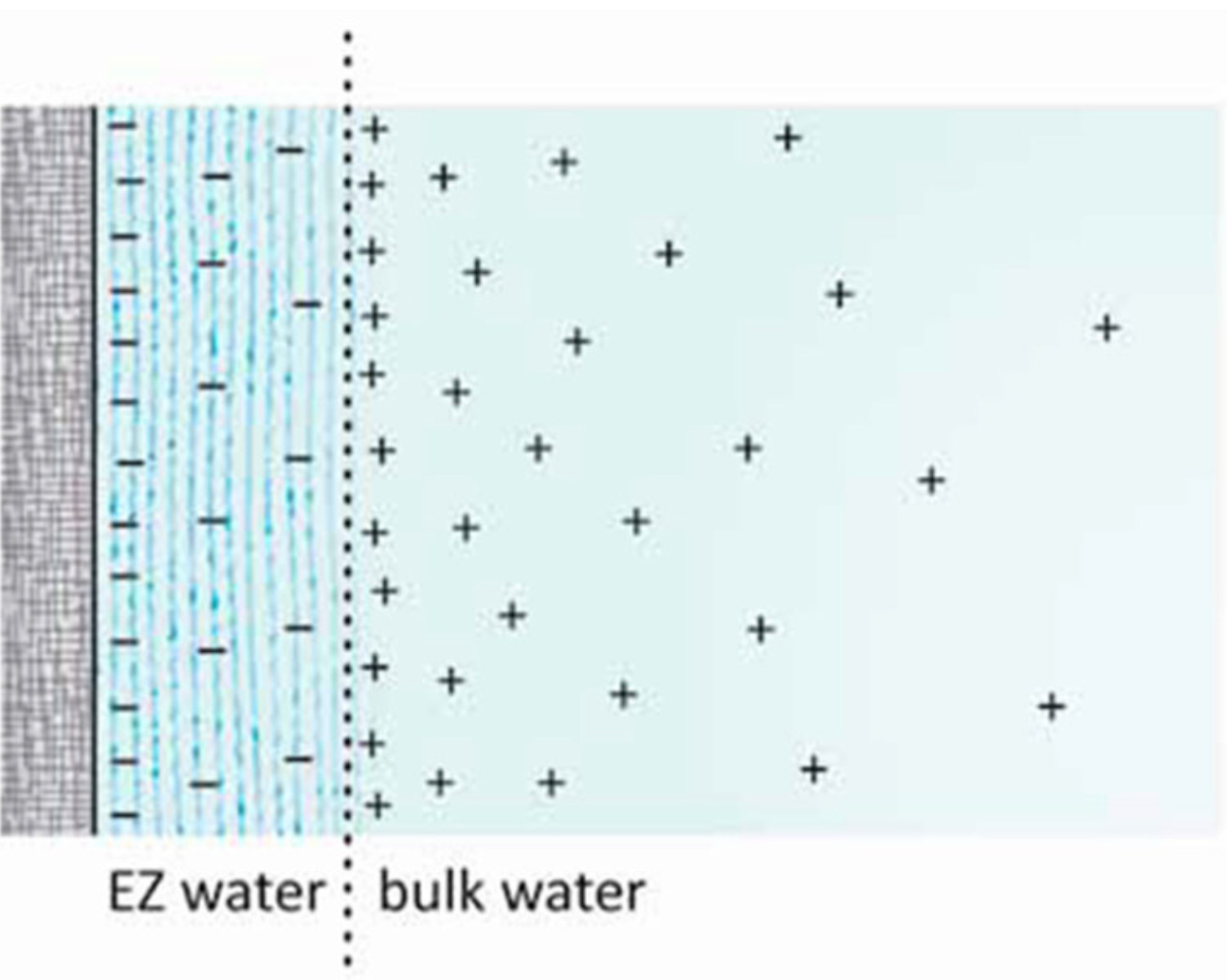
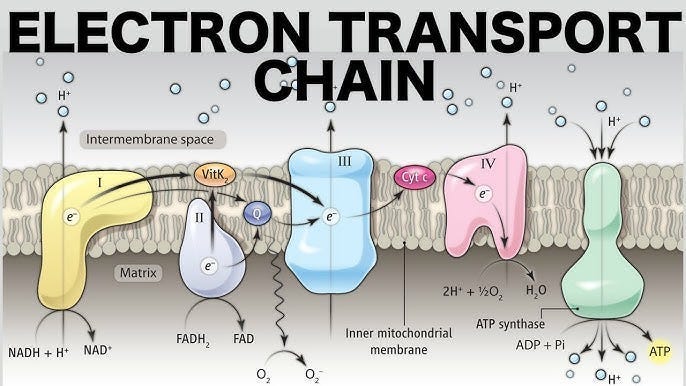


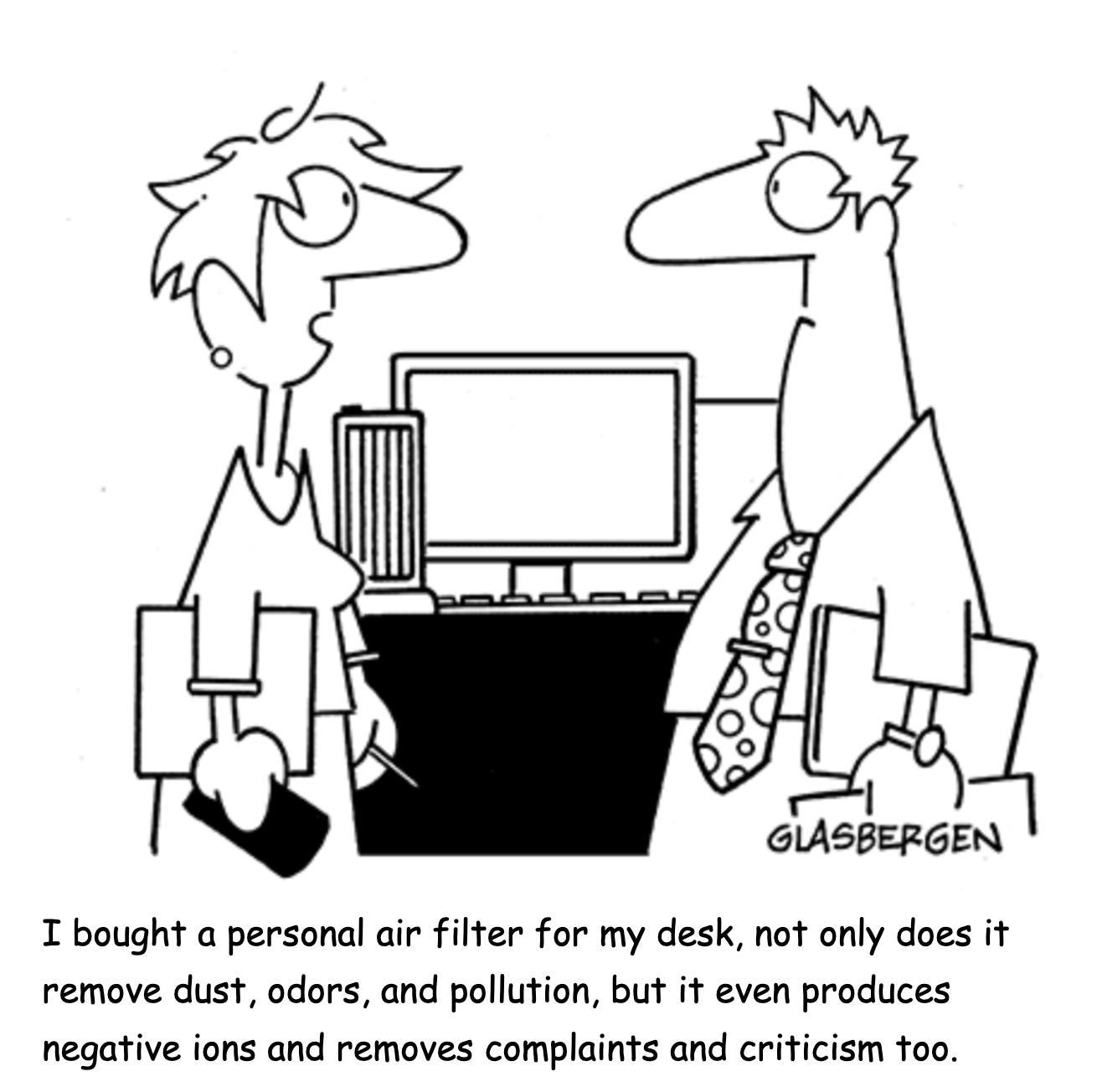
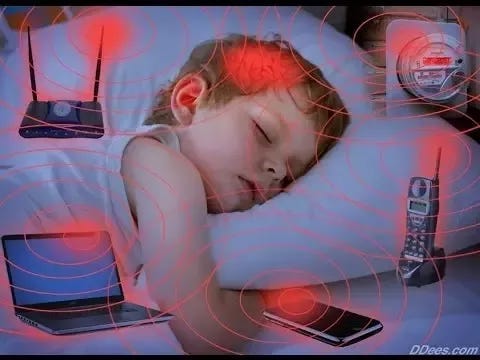
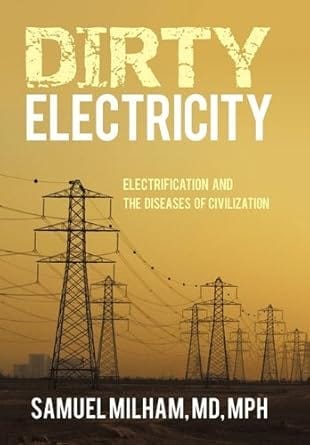
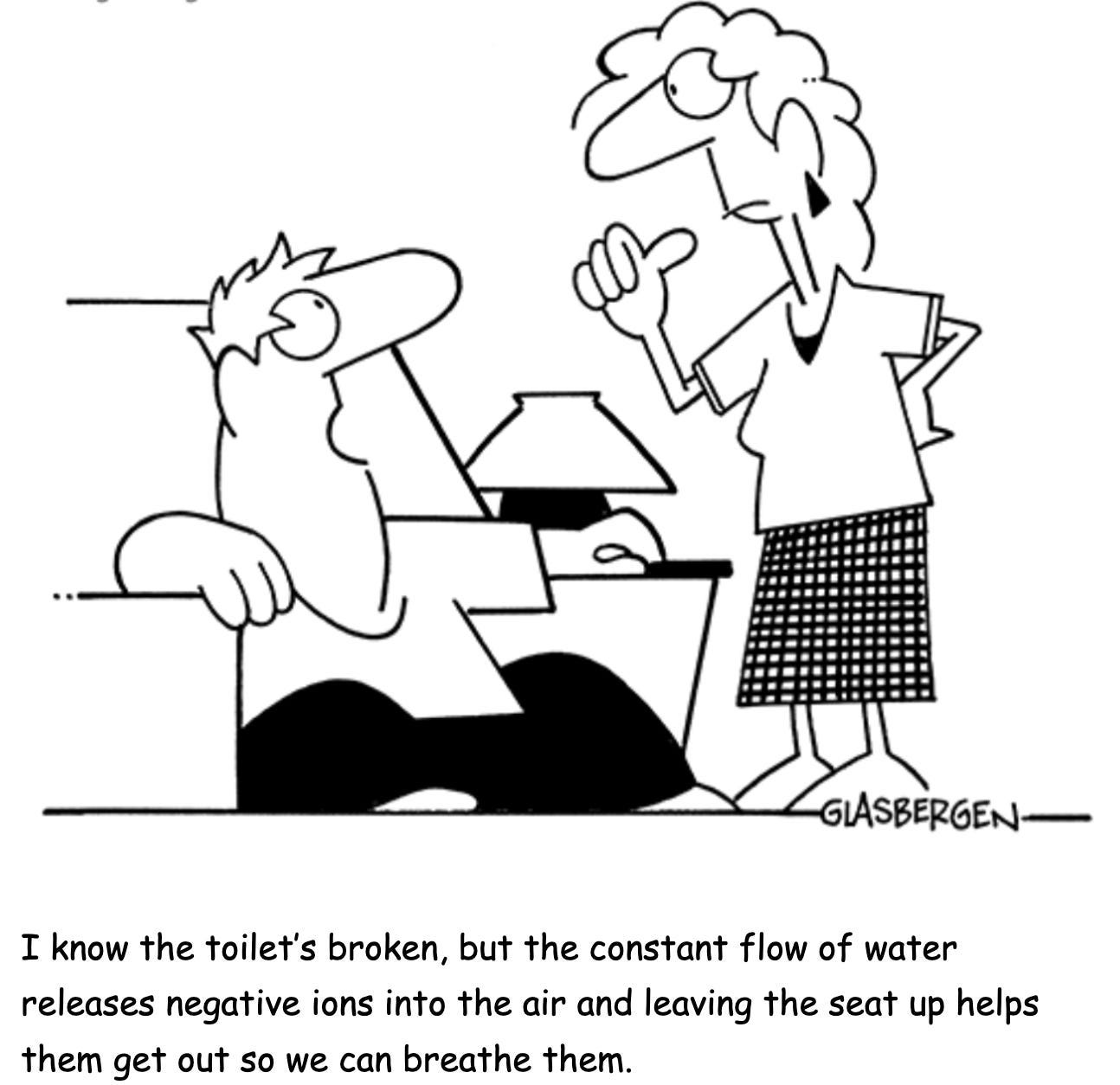
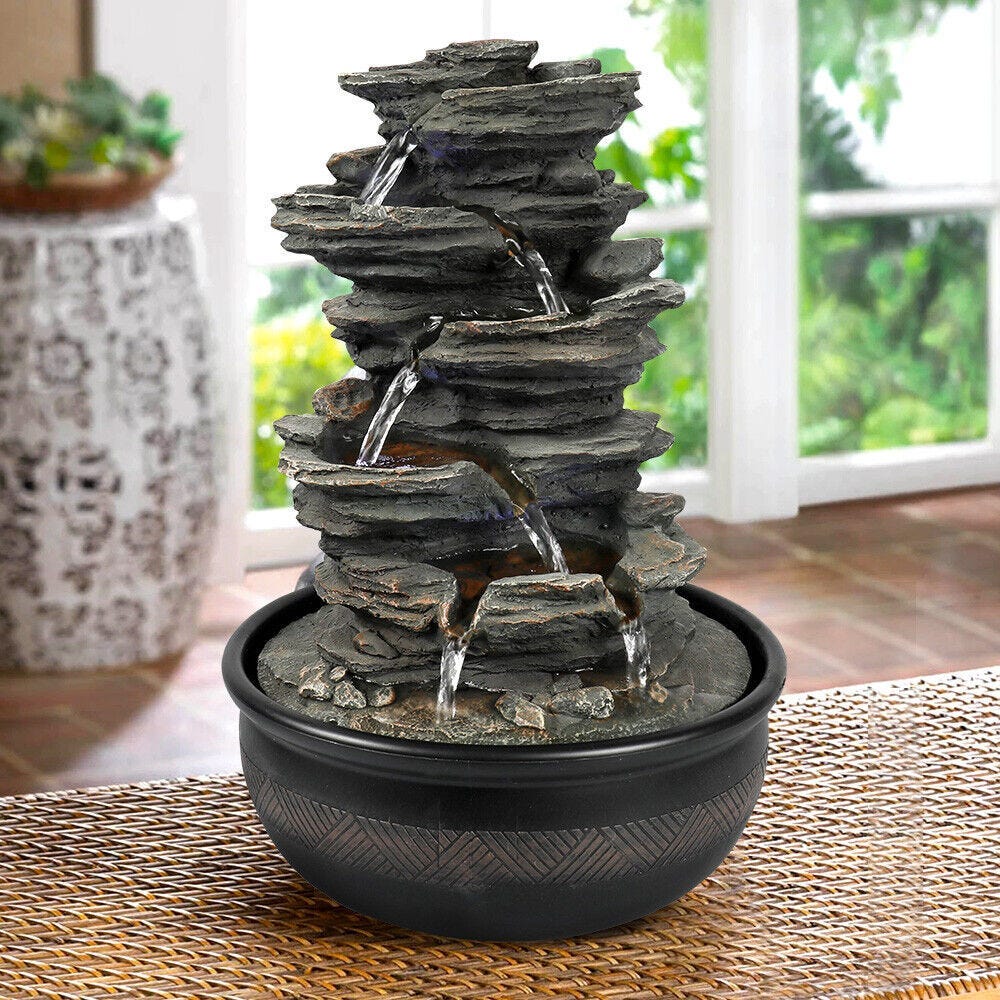

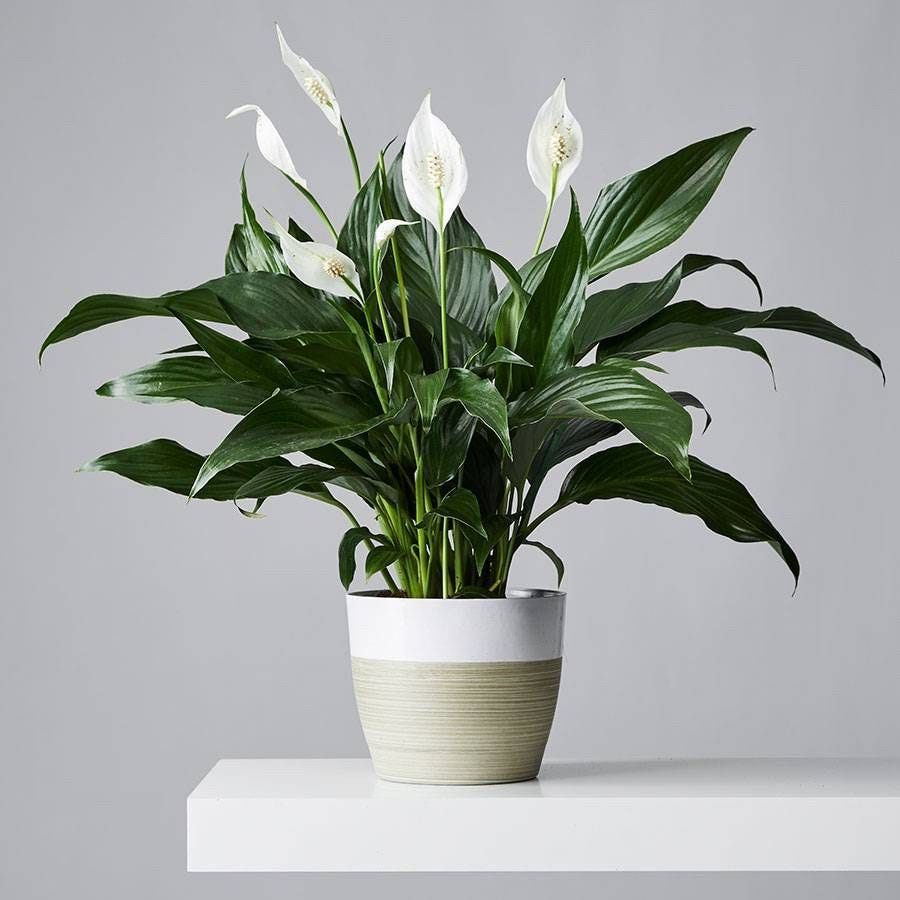




No comments:
Post a Comment